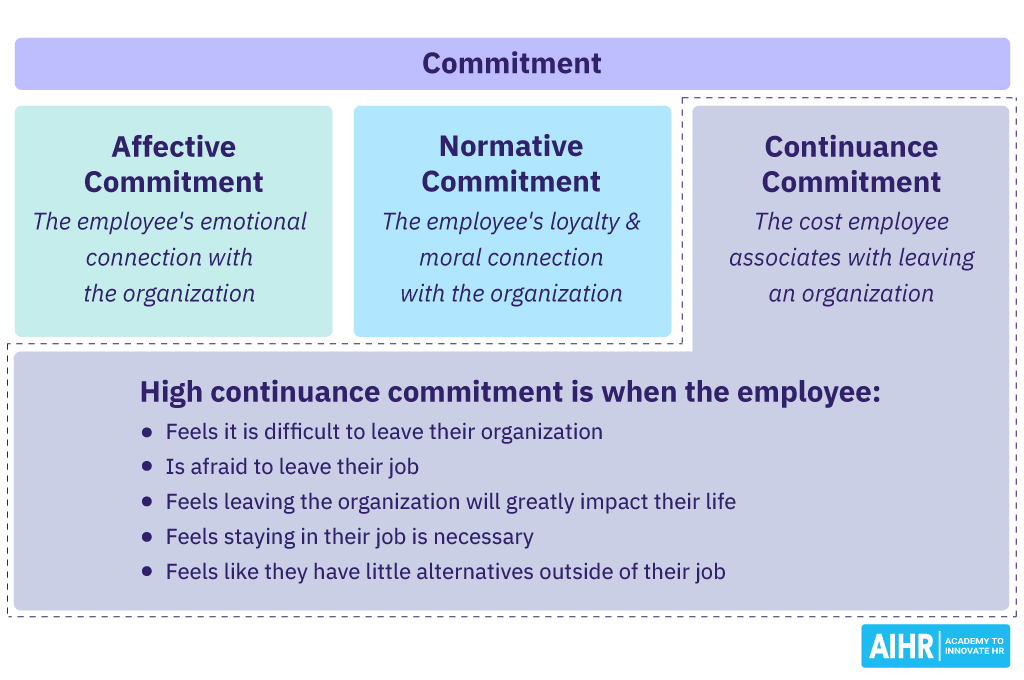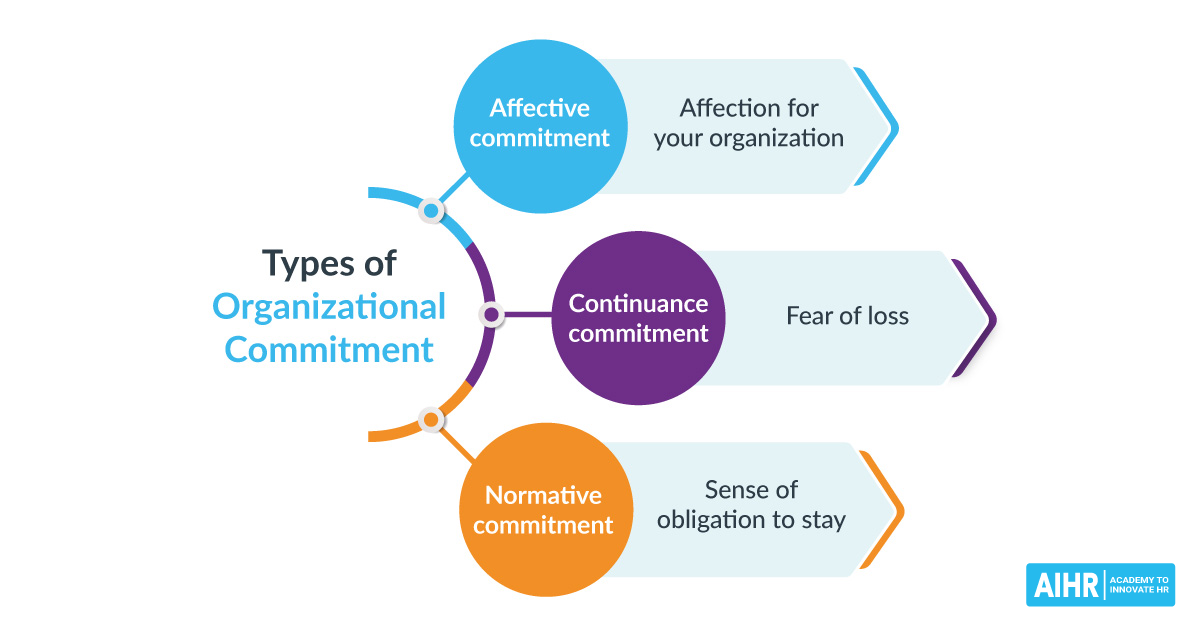Continuance Commitment
What is continuance commitment?
Continuance commitment is a sense of loyalty to the organization because the employee perceives few alternatives or perceives the cost of leaving the organization as too high.
An example may be an older employee who feels that they will struggle to find a job with similar pay and benefits when they leave the organization. Or take an employee who invested their money in an employee stock option plan. They might feel that quitting the organization would harm their financial situation as the organization has been going through a rough patch.
The benefit of continuance commitment is primarily lower employee turnover. Employees with high continuance commitment are more likely to remain in the organization.
What is the difference between continuance commitment and normative commitment?
Continuance commitment is part of the three-component model (TCM) of organizational commitment. The other two components are normative commitment and affective commitment.
The most significant difference between continuance commitment and normative commitment is that normative commitment is a sense of responsibility employees feel for their job or organization that holds them back from quitting. This is a perceived moral obligation to stick with something through thick and thin.
Conversely, continuance commitment concerns the perceived loss of quitting a job and the lack of alternatives. People with high continuance commitment feel they lack alternatives. They may stick to the organization as that is their best option for a decently-paid job.
This was common in some of the large European banks before the 2008 financial crisis, where generous bonuses and high salaries prevented workers from switching jobs. Especially older employees were trapped in a ‘golden cage’ as they were paid a premium for their tenure and would not find jobs with similar pay anywhere else. As a result, they stayed at their organization.
A person with in-demand skills for whom it is easy to switch jobs may have low continuance commitment but still high normative commitment (as they may feel attached to and responsible for the organization’s success).

Measuring continuance commitment
Continuance commitment is part of the three-component model, which measures normative, affective, and continuance commitment. This scale is developed by Jaros and builds on the original research of Meyer, Allen, and Smith.
- I worry about the loss of investments I have made in this organization.
- If I wasn’t a member of this organization, I would be sad because my life would be disrupted.
- I am loyal to this organization because I have invested a lot in it emotionally, socially, and economically.
- I often feel anxious about what I have to lose with this organization.
- Sometimes I worry about what might happen if something was to happen to this organization and I was no longer a member.
- I am dedicated to this organization because I fear what I have to lose in it.
Continuance commitment interventions
Effective interventions to increase continuance commitment include:
- An above-market compensation for staff
- Creating a workplace where employees feel like they belong and where everyone feels equal
- Other interventions that aim to improve employee wellbeing
If the organization is able to create an employee experience that is hard to match, employees will be less likely to take the risk and switch jobs to an organization that may not offer the same level of experience.







